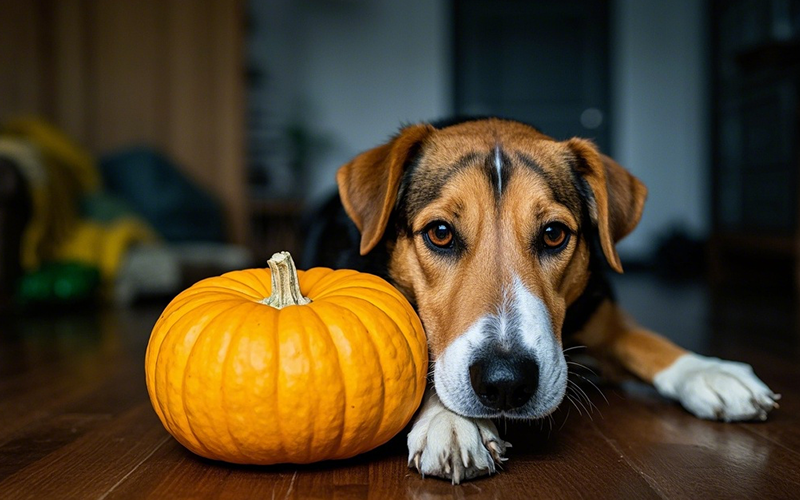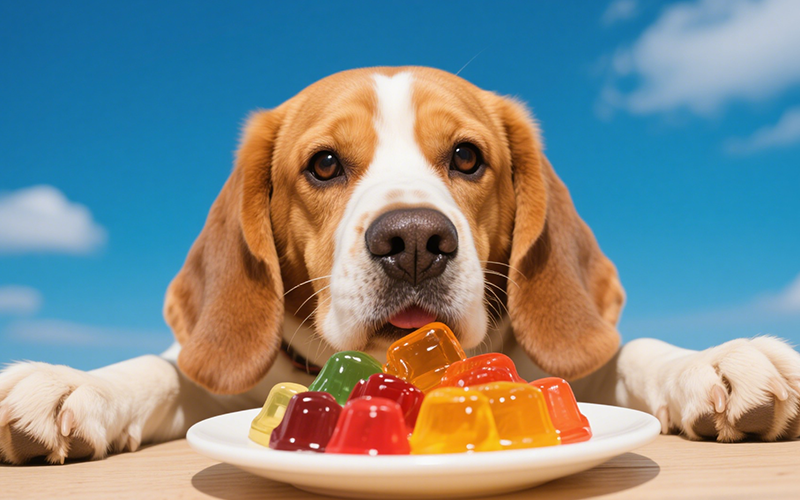Can Dogs Eat Yellow Squash? A Healthy and Safe Veggie for Your Pup!
- 31 Mar 2025 11:13
As a dog owner, you're probably always looking for new, healthy treats to add to your pup’s diet. Yellow squash, a vibrant and delicious vegetable, is a great option to consider! But is it safe for your dog to eat? Let’s explore the benefits and potential risks of feeding your dog yellow squash and how to serve it properly.

Why Yellow Squash is Great for Dogs 🥒
Yellow squash can be an excellent addition to your dog’s diet. It’s full of vitamins, minerals, and fiber that can offer several health benefits:
Packed with Nutrients 🌱
Yellow squash is rich in vitamins A and C, both of which help maintain a healthy immune system, good vision, and healthy skin. It’s also full of potassium, which helps regulate fluid balance and muscle function in dogs.Low in Calories 🔥
If your dog is watching their weight, yellow squash is an excellent, low-calorie treat. It helps fill your dog’s stomach without adding a lot of calories, making it a perfect option for a guilt-free snack.Supports Digestive Health 💩
Yellow squash contains fiber, which is beneficial for your dog’s digestion. Fiber helps keep things moving in your dog’s digestive system, preventing constipation and supporting overall gut health.Hydrating 💧
This vegetable has a high water content, making it a great hydrating food for your dog, especially during warmer months when hydration is important.
How to Safely Serve Yellow Squash to Your Dog 🐕
While yellow squash is a safe vegetable for dogs, it’s important to prepare it correctly:
Cook the Squash 🍽️
Raw yellow squash is safe for dogs, but some dogs may have difficulty digesting raw vegetables. To make it easier for your dog to digest, it’s a good idea to cook the squash. You can steam, boil, or bake it, but avoid frying or adding oils, salt, or seasonings.Cut into Small Pieces ✂️
To prevent choking, cut the yellow squash into small, bite-sized pieces. This is especially important for smaller dogs or those who tend to gulp down their food too quickly.Serve in Moderation ⚖️
While yellow squash is healthy, it’s best served in moderation. Too much fiber can upset your dog’s stomach, causing gas or diarrhea. A small portion a few times a week is plenty for most dogs.
Potential Risks of Feeding Yellow Squash to Dogs 🚨
Yellow squash is generally safe for dogs, but there are a few things to keep in mind:
Avoid the Skin and Seeds 🚫
Though the flesh of the yellow squash is safe for dogs, the skin and seeds may be difficult for some dogs to digest. It’s best to remove the skin and seeds before serving it to your dog. If your dog does ingest the skin or seeds, don’t panic, but monitor them for any signs of digestive upset.Monitor for Allergic Reactions ⚠️
While rare, some dogs may be allergic to certain vegetables, including squash. If you’re introducing yellow squash to your dog for the first time, start with a small amount and watch for signs of an allergic reaction, such as itching, swelling, or digestive issues. If any of these occur, stop feeding yellow squash and consult your pet’s health assistant for guidance.
Other Vegetables Safe for Dogs 🥕🌽
If your dog loves yellow squash, they might also enjoy these other dog-friendly vegetables:
Carrots 🥕
Carrots are low in calories, high in fiber, and full of beta-carotene for healthy eyes and skin.Green Beans 🌿
Green beans are another low-calorie vegetable rich in fiber and vitamins that support your dog’s digestive and immune systems.Sweet Potatoes 🍠
Sweet potatoes are a great source of fiber, vitamin A, and potassium, helping with digestion and supporting a shiny coat.Cucumbers 🥒
Cucumbers are low in calories and high in water, making them a hydrating, refreshing snack for your dog.
How PettureX Can Assist with Your Dog’s Health 🧠
If you're unsure about what vegetables are best for your dog or need help with their diet, PettureX is the perfect solution. PettureX provides 24/7 online consultations and pet image recognition, making it easy to get the answers you need. Whether you're looking for advice on introducing new foods like yellow squash into your dog’s diet or managing their health, PettureX is here to help! 🐾💻
Conclusion: Can Dogs Eat Yellow Squash? ✅
Yes, dogs can eat yellow squash! This nutritious vegetable provides several health benefits, including improved digestion, a healthy coat, and hydration. Just make sure to cook it properly, remove the skin and seeds, and serve it in moderation to avoid any digestive issues.
As always, if you have any concerns or need personalized advice, don’t hesitate to reach out to PettureX for expert guidance on your dog’s health and nutrition. 🐶💖
Need more help with your dog's diet? Try PettureX for 24/7 consultations and expert support on all things pet health!
Related

Can Dogs Eat Peaches? Vet Explains Benefits, Cyanide Risks & Safe Serving
- 16 Apr 2025
Can Dogs Eat Mulberries? Vet Explains Safety, Benefits & Potential Risks
- 16 Apr 2025
Can Dogs Eat Mozzarella? Vet Explains the Cheesy Truth (Risks & Benefits)
- 16 Apr 2025
Can Dogs Eat Mango Skin? Vet Explains Why It's a Risky Chew!
- 16 Apr 2025
Can Dogs Eat Maple Syrup? The Sugary Truth & Why Vets Advise Against It
- 16 Apr 2025
Can Dogs Eat Mac n Cheese? Vet Explains Why This Comfort Food Is Unsafe!
- 16 Apr 2025
Can Dogs Eat Liver? Vet Guide to This Nutrient-Dense Organ Meat (Benefits & Risks!)
- 16 Apr 2025
Can Dogs Eat Licorice? The Sweet Danger & Glycyrrhizin Risk Explained by Vets
- 16 Apr 2025
Can Dogs Eat Lamb? Vet Insights on This Nutritious Meat Option
- 16 Apr 2025
Can Dogs Eat Jelly? The Sweet Truth About Sugar, Xylitol & Why Vets Say No!
- 16 Apr 2025
